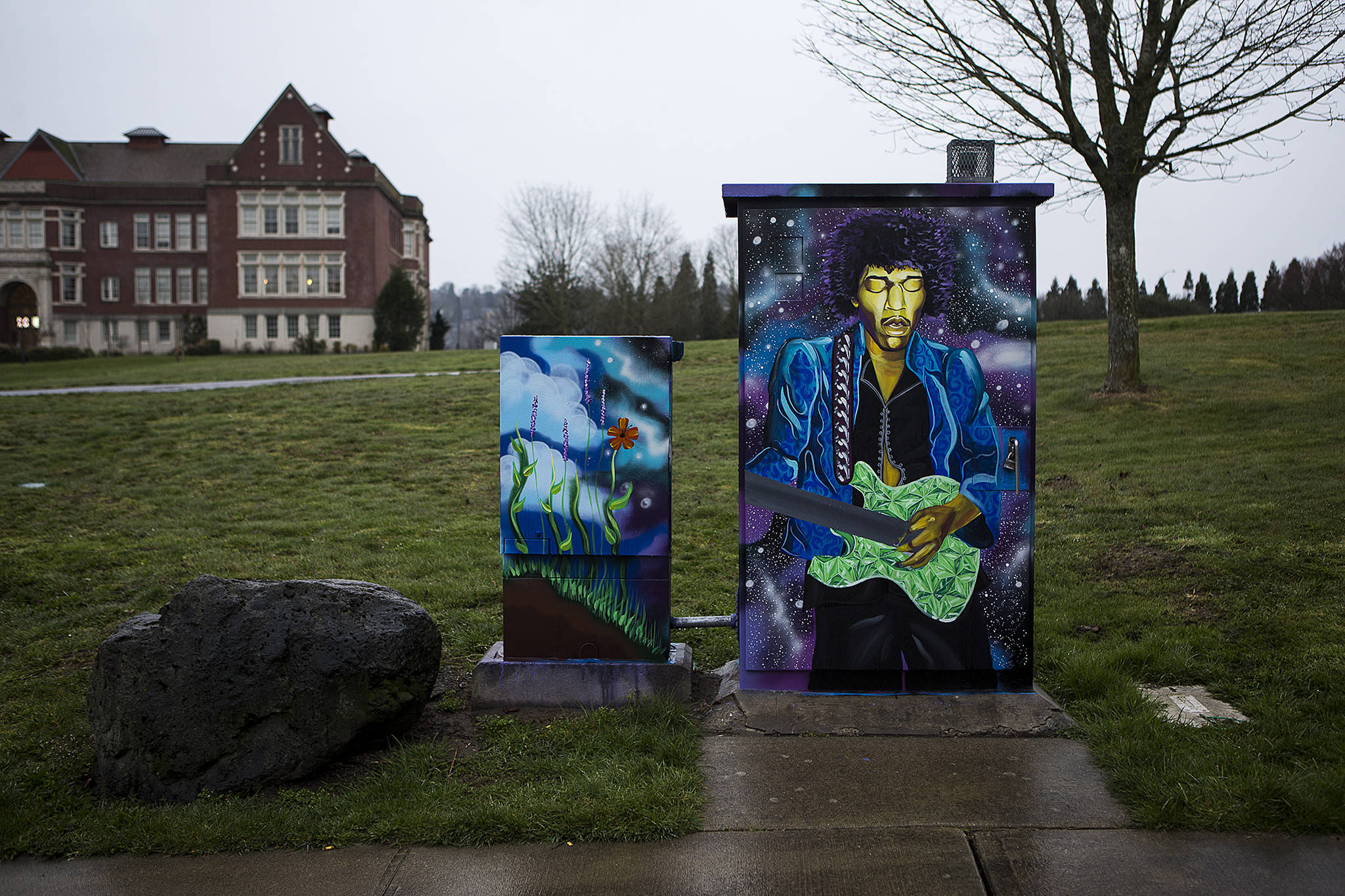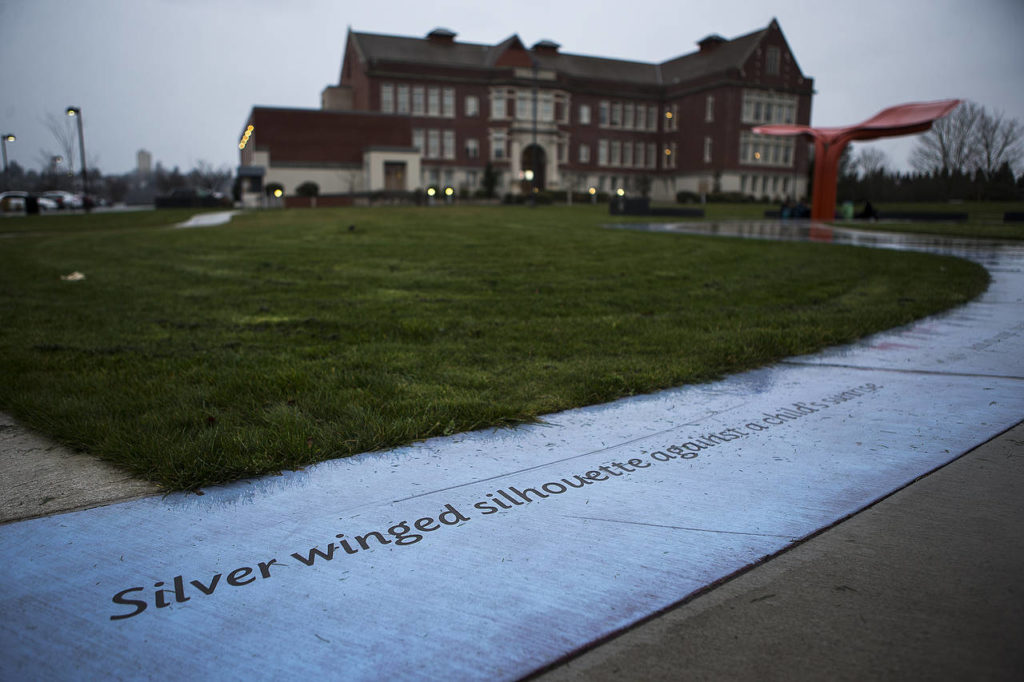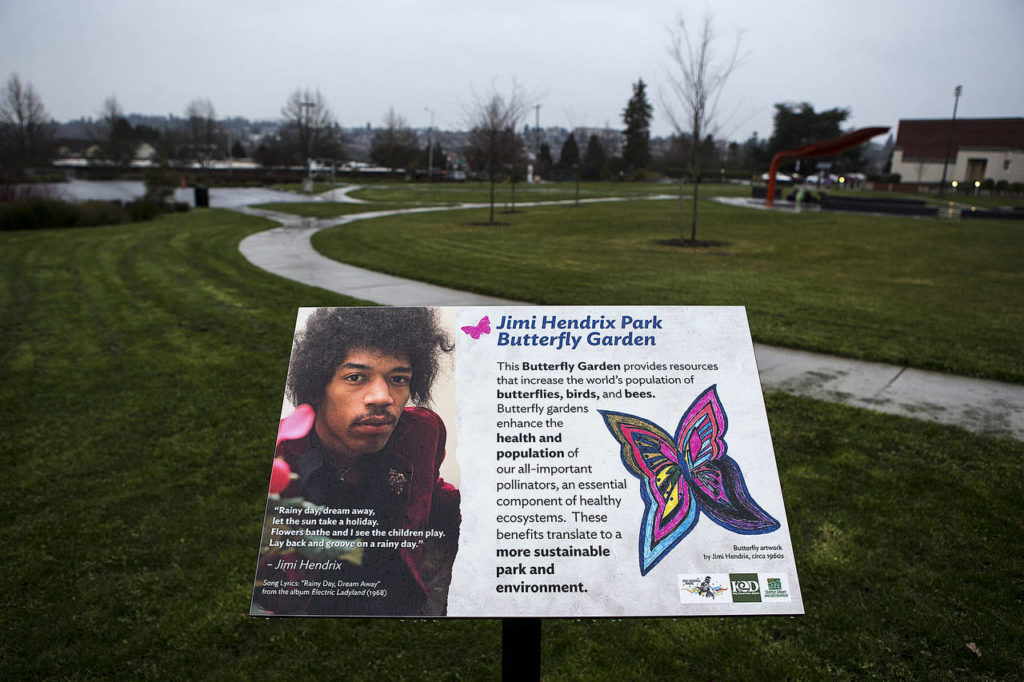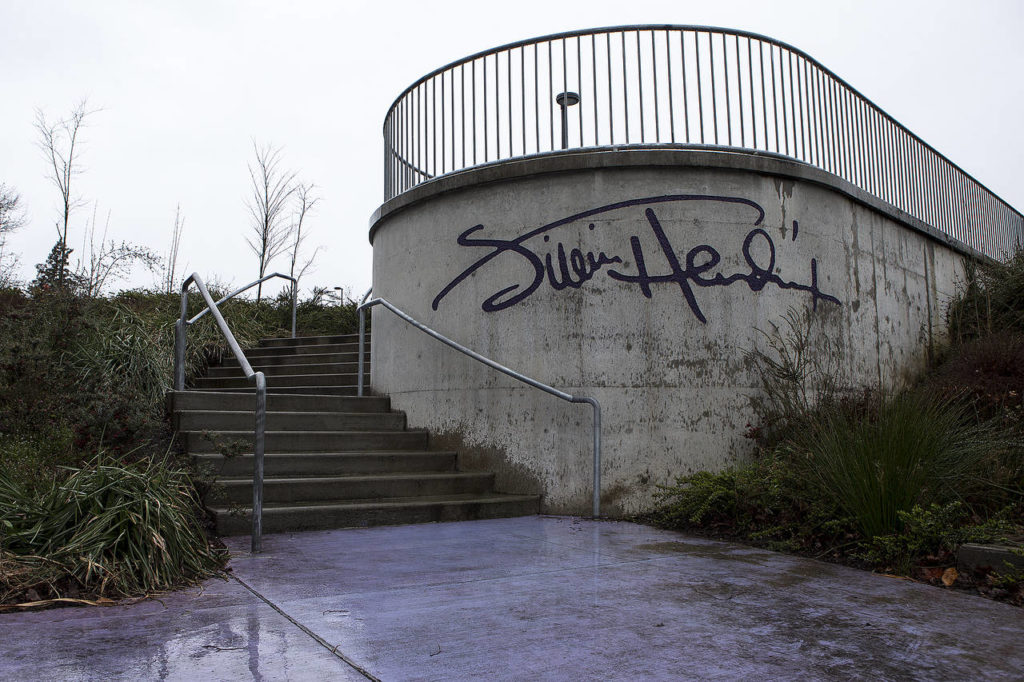SEATTLE — The quiet was the first surprise.
My mind going blank was the second.
A minute hadn’t even passed after sitting down in Jimi Hendrix Park when I noticed I wasn’t thinking about anything. I was just there.
No thoughts of work, video games, my social life or what’s for dinner. Just the sounds of four women chatting on a park bench nearby, smoking what smelled like marijuana (it is Seattle after all), the occasional commercial jet flying overhead and the distant laughter of kids at recess.
Not bad for a park in the middle of a buzzing metropolis. It’s at 2400 S. Massachusetts St. in Seattle’s Central District.
Seattle resident Brittnany Becerra, who visits the park almost every day to walk her kids home from school, summed things up best.
“It’s one of those parks that doesn’t have the bells and whistles, but it has a feeling to it,” Becerra said. “You just want to come. Even my kids want to come through there. There’s no swings, there’s nowhere to play. They just like going there.”
It’s as nice on the eyes as it is for a restless mind, too.
Visitors are greeted with Hendrix’s looping signature in purple script at the main entrance. Take another route, and you’ll see two metallic guitars, also purple, on either side of an information booth. Both are nods to the famed musician who grew up in Seattle.
Winding paths offer a half dozen different routes through the 2½-acre park. One features 12 plaques detailing Hendrix’s life. That path models the neck of a guitar when viewed aerially; the plaques are placed to look like the frets on the guitar.
Everything flows to an orange sculpture at the center that reminds me of the Museum of Pop Culture, formerly known as EMP. The curvy structure, called the central shelter and used for its shade by performers during the summer, was designed by Murase Associates of Seattle. Designer Scott Murase said it can be interpreted in multiple ways, but it is most evocative of a butterfly wing.
It’s as if Hendrix’s life story does not end with his death, but of him flying away in a different form.
“It’s meant to be modulated and curved, almost like it could take off,” Murase said. “It has a very light feel to it.”
Etched in the circular pathway surrounding the sculpture are the lyrics for two Hendrix songs: “Little Wing” and “Angel.”
The few trees inside the park are barren, at least for now. They’ll look completely different over the next few months as spring comes into full swing. Cedar saplings and paulownia trees will eventually bloom purple flowers.
More upgrades, also designed by the Murase Associates, a Seattle landscape architecture studio, are likely coming this summer, including a purple sound wave wall with a photograph of Hendrix as the focal point.
But it wasn’t always like this. Before the beauty, contemplative art and tributes to a great musician came years of ups and downs in development.
It was a parking lot for an elementary school until 2003, when the city tore up the asphalt to make way for the Northwest African American Museum. Grass was placed in an open area next to the museum built in 2008, and it was dubbed a neighborhood park.
The Seattle Parks and Recreation Department renamed the grass field Jimi Hendrix Park in 2006 with the goal of making it a community gathering space that paid tribute to Hendrix’s contribution to rock ‘n’ roll.
But permitting, funding and construction delays prolonged things.
The park, during one of its several unfinished stages, appeared in Macklemore’s “Thrift Shop” music video in 2012. Back then it was just a patch of grass with a few paths that were prone to puddles due to poor drainage.
“It seemed like it took forever,” said Anny Hess, a 33-year-old longtime Seattle resident. “It was like, ‘OK, when are we going to get done with this?’ ”
The $2.2 million improvement project was completed last summer, much to the satisfaction of regular visitors like Hess.
“It’s gorgeous,” Hess said. “I love it.”
Another frequent visitor, Hannah Gribben, said the park could be a strong beacon for the city’s Central District, which is in a positive position for development. As an added bonus, the open, grassy field nearby is also perfect for pets.
“This part of Seattle is up and coming,” Gribben said. “It’s becoming gentrified. I think our housing prices have increased by 20 or 30 percent.”
“It’s a very diverse part of Seattle, it’s a developing part of Seattle and it’s a really nice park,” she added.
Becerra and her husband bonded over Hendrix’s music, while their daughter is becoming a fan as she learns to play the guitar. Gribben called him “innovative and a groundbreaker on the guitar.”
Hess is proud to be from the city where the guitar legend grew up and briefly attended high school.
I half expected the park to be wired for sound and to hear “Purple Haze” or another one of the musician’s famous songs playing in the background. But that would have distracted me from what I needed: a breath of fresh air and a quiet mind.
If you’re a Hendrix fan and want a space awash with his legacy, it’s worth the trip.
I want to go back.
Talk to us
> Give us your news tips.
> Send us a letter to the editor.
> More Herald contact information.




























